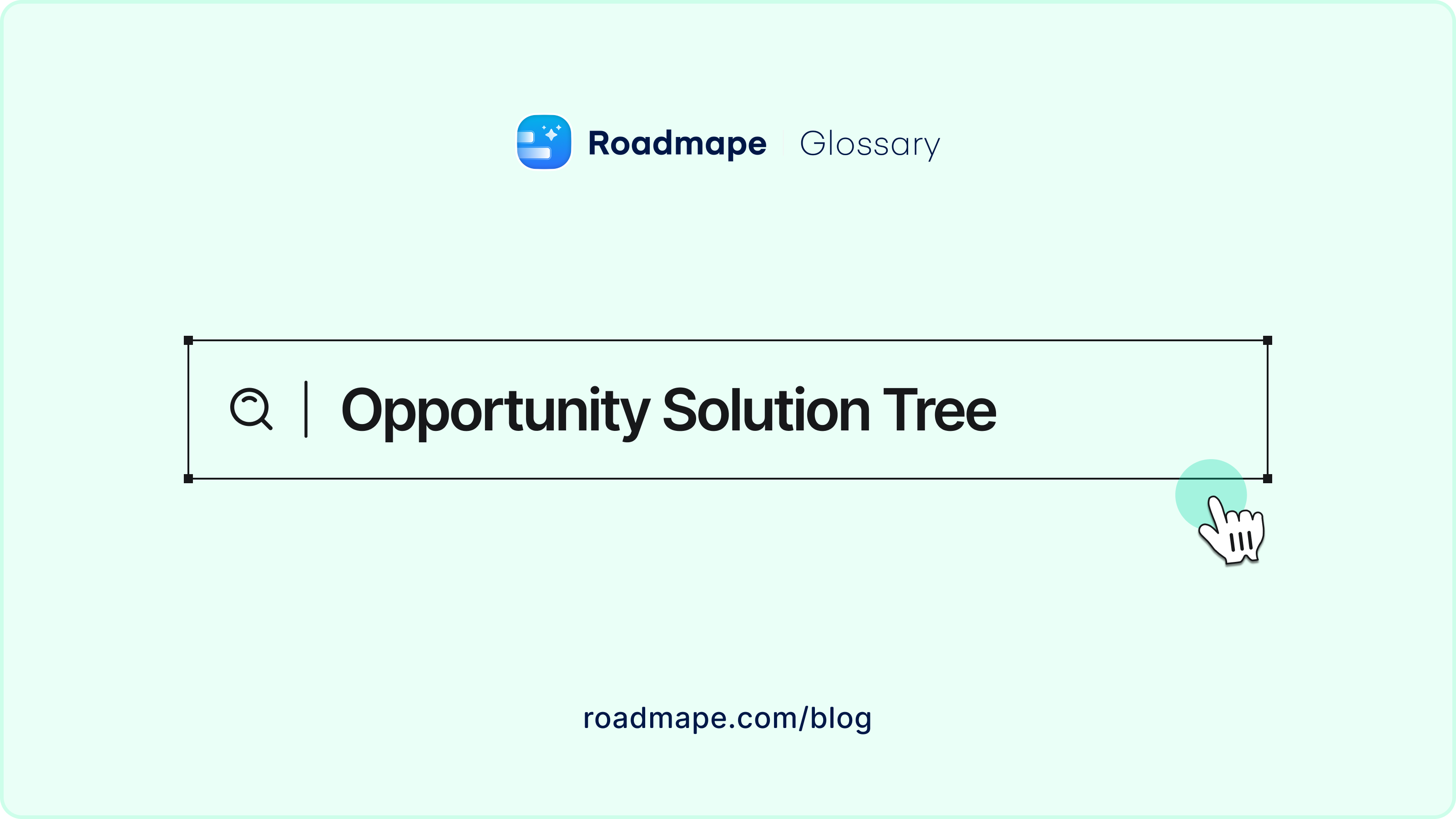Creating Addictive Products: Insights from 'Hooked'
Leverage 'Hooked' strategies to develop habit-forming SaaS products that ensure user engagement and retention.

TL;DR
- The Hook Model, consisting of Trigger, Action, Variable Reward, and Investment stages, provides a framework for building habit-forming products.
- Variable rewards tap into users' desire for novelty and excitement, enhancing engagement and habit formation.
- Ethical considerations play a vital role in creating products that genuinely benefit users and align with their interests.
- Practical strategies include user research, iterative product development, personalization, and leveraging social validation.
Key Takeaways
- Understand the psychology behind habit formation to create engaging experiences that drive customer loyalty.
- Implement the Hook Model, comprising Trigger, Action, Variable Reward, and Investment stages, to design habit-forming products.
- Prioritize ethical considerations and align business goals with user interests to build sustainable customer relationships.
In the competitive landscape of SaaS companies, engaging and retaining customers is crucial for success. "Hooked: How to Build Habit-Forming Products" by Nir Eyal offers invaluable insights into the psychology behind creating addictive user experiences that drive customer engagement and loyalty.
This blog post provides a comprehensive summary of the book, highlighting the key concepts and actionable strategies for product managers.
Understanding the Hook Model for Habit Formation

To create habit-forming products that truly captivate users, it is essential to understand the core principles of the Hook Model. Nir Eyal's "Hooked" introduces this model, consisting of four key stages: Trigger, Action, Variable Reward, and Investment.
The Hook Model
Let's explore each stage in greater detail to grasp how they contribute to habit formation and user engagement.
Trigger
The Trigger stage serves as the initial spark that prompts users to take action. Triggers can be external or internal.
External triggers are cues in the user's environment that prompt them to engage with the product, such as push notifications, email alerts, or advertisements.
Internal triggers, on the other hand, are mental or emotional cues that drive users to seek out the product independently.
These cues can be linked to a particular thought, emotion, or situation that compels the user to take action.
Understanding the triggers that resonate with your target audience is crucial for effectively capturing their attention. By identifying the external triggers that align with users' needs and desires, you can create compelling touchpoints that prompt them to interact with your product.
Similarly, recognizing the internal triggers that naturally occur within users' lives allows you to position your product as a solution to their needs, making it more likely that they will engage with it.
Action
The Action stage focuses on making the user's interaction with the product as seamless and effortless as possible.
Eyal emphasizes the importance of reducing friction and eliminating barriers to entry. The easier it is for users to perform the desired action, the more likely they are to engage with the product.
Simplifying the user experience involves streamlining processes, minimizing the number of steps required to complete an action, and optimizing user interfaces for intuitive navigation. By removing obstacles and creating a frictionless experience, you enhance user satisfaction and increase the likelihood of repeated actions.
Variable Reward
The Variable Reward stage is a critical component of the Hook Model. Eyal explores the power of providing users with variable and unpredictable rewards, which tap into the human desire for novelty and excitement.
When users receive rewards that vary in nature or magnitude, they experience a sense of anticipation and eagerness for the next reward. This anticipation creates an emotional response that keeps users engaged and coming back for more.
Variable rewards can take various forms, such as unlocking new levels, earning badges, receiving personalized recommendations, or gaining social recognition. By incorporating gamification elements and personalizing the rewards based on user preferences and behaviors, you create an environment where users constantly seek the next reward, reinforcing their habit formation and deepening their engagement with the product.
Investment
The Investment stage focuses on encouraging users to invest time, effort, or data into the product. By investing in the product, users become more deeply connected and committed, solidifying their habit formation and driving long-term engagement.
Investments can come in different forms, such as creating a user profile, customizing settings, saving preferences, or providing feedback. These actions not only enhance the user experience but also make it more likely for users to continue using the product.
As users invest more in the product, they develop a sense of ownership and a vested interest in its success, making it harder for them to switch to alternative solutions.
Ethical Considerations
Throughout the book, Eyal highlights the ethical implications of building habit-forming products. He emphasizes the responsibility of product creators to prioritize the well-being and interests of users.
It is crucial to ensure that the products genuinely provide value and improve users' lives, rather than employing manipulative tactics solely for the sake of engagement.
By maintaining transparency, respecting user privacy, and delivering meaningful value, companies can build trust and foster long-term customer loyalty. Aligning business goals with user interests not only leads to sustainable growth but also contributes to creating a positive impact on users' lives.
Incorporating the principles of the Hook Model into your product management strategy empowers you to create experiences that form strong user habits. By understanding the triggers, simplifying actions, providing variable rewards, and encouraging investment, you can build habit-forming products that keep users engaged and foster lasting customer loyalty.
Ethical Considerations in Building Habit-Forming Products
When it comes to building habit-forming products, ethical considerations play a pivotal role. Nir Eyal's "Hooked" emphasizes the responsibility of product creators to prioritize the well-being and interests of users.
While the goal is to drive user engagement and retention, it is essential to approach these practices ethically and avoid manipulative tactics.
Let's explore the ethical considerations associated with building habit-forming products and how they can be addressed.
User Well-being as the Priority
One of the primary ethical considerations is to ensure that the products being developed genuinely benefit users and improve their lives. Instead of solely focusing on maximizing engagement, product creators must prioritize the well-being of their users. By aligning business goals with user interests, companies can create experiences that are truly customer-centric and add value to users' lives.
To achieve this, it is crucial to conduct thorough user research and understand the needs, desires, and pain points of the target audience. By incorporating user feedback and iteratively improving the product, companies can ensure that their offerings address genuine user needs and provide meaningful solutions.
Transparency and Informed Consent
Transparency is another critical aspect of building ethical habit-forming products. Users should have a clear understanding of how the product functions and how their data is being utilized.
It is important to be transparent about data collection, storage, and usage practices, ensuring that users can make informed decisions about their engagement with the product.
Obtaining informed consent from users regarding data collection and usage is crucial. Companies should provide clear and easily accessible privacy policies that outline the purpose and scope of data collection, as well as how it will be protected and used. By empowering users with transparency and control over their data, companies can build trust and foster stronger relationships with their user base.

Avoiding Dark Patterns
Dark patterns refer to design techniques or user interface patterns that manipulate users into taking actions they did not intend or fully understand. These patterns can be misleading, coercive, or deceptive, compromising the ethical integrity of a product.
It is essential to steer clear of such practices and ensure that user interfaces are intuitive, transparent, and empower users to make informed choices.
By focusing on building user trust and providing clear communication, companies can avoid the use of dark patterns and instead create experiences that respect user autonomy and decision-making.
Balancing Engagement and User Control
While the goal is to create habit-forming products, it is essential to strike a balance between driving engagement and giving users control over their experiences. Building habits should not infringe upon user autonomy or create dependency that is detrimental to their well-being.
By providing features that allow users to customize their experiences, set boundaries, and control the frequency and intensity of notifications or rewards, companies can empower users to engage with the product on their terms.
This balance ensures that users feel in control of their interactions, fostering a healthier and more sustainable relationship with the product.
Long-Term Value and Sustainable Growth
Ethical product creation involves focusing on long-term value rather than short-term gains. Companies should aim to deliver meaningful and enduring value to users, ensuring that the habit-forming experiences they create are genuinely beneficial.
By continuously iterating and improving the product based on user feedback, companies can adapt to evolving user needs and deliver sustainable growth.
This approach fosters customer loyalty, as users recognize the value the product brings to their lives, and promotes a positive brand image built on trust and ethical practices.
In conclusion, ethical considerations are crucial in building habit-forming products. By prioritizing user well-being, transparency, user control, and long-term value, companies can create experiences that not only drive engagement and retention but also have a positive impact on users' lives.
Striking the right balance between creating habit-forming experiences and ethical product practices is essential for sustained success and user satisfaction.
Practical Strategies for Habit Formation and User Engagement
Building habit-forming products requires more than just understanding the theoretical concepts. It also involves practical strategies and implementation techniques.
In "Hooked," Nir Eyal provides valuable insights into applying the Hook Model to various industries and contexts.
Let's explore some practical strategies derived from the book that can help product managers create habit-forming experiences and enhance user engagement.
Understand User Triggers
To effectively trigger users and prompt them to take action, it is crucial to understand their motivations, needs, and pain points. Conducting user research, surveys, and interviews can provide valuable insights into the triggers that resonate with your target audience. By identifying both external and internal triggers, you can design experiences that capture users' attention and drive them towards engaging with your product.
External triggers can take the form of push notifications, email alerts, or social media updates that create a sense of urgency or curiosity.
Internal triggers, on the other hand, are psychological cues or emotions that prompt users to seek out the product independently.
By aligning your triggers with users' natural thought processes or emotional states, you can enhance the effectiveness of your product's triggers.
Streamline Actions
Simplifying the user's action process is essential for creating a seamless and effortless experience. Reduce friction and eliminate barriers that could hinder users from completing the desired action.
This can involve optimizing user interfaces, simplifying forms, and minimizing the number of steps required to accomplish a task.
By making actions as intuitive and straightforward as possible, you increase the likelihood of users engaging with your product.
Clear call-to-action buttons, intuitive navigation, and contextual guidance can help users easily understand how to interact with your product and encourage them to take the desired actions.
Incorporate Variable Rewards
Variable rewards play a significant role in creating addictive and engaging experiences. Humans are naturally drawn to novelty and unpredictability, and leveraging this psychological aspect can enhance user engagement.
Eyal suggests incorporating variable rewards that provide users with a sense of anticipation and excitement.
These rewards can take various forms, such as unlocking new levels, earning badges, receiving personalized recommendations, or gaining social recognition. By introducing surprise elements, personalization, and gamification mechanics, you can keep users intrigued and motivated to continue using your product.
However, it is essential to strike a balance and avoid excessive or manipulative use of rewards, ensuring that they genuinely enhance the user experience.
Encourage User Investment
Encouraging users to invest time, effort, or data into your product can deepen their commitment and strengthen the habit-forming process. Investments create a sense of ownership and make users more likely to continue using your product over time.
Examples of user investments include creating a user profile, saving preferences, or providing feedback.
By offering features that allow users to customize their experiences or personalize the product to their liking, you create a sense of personal investment. Additionally, providing opportunities for users to contribute to the product's development, such as participating in beta testing or providing feedback, strengthens their connection and commitment to the product.
Iterate and Optimize
Continuous iteration and optimization are key to creating habit-forming experiences. Collect user feedback, analyze user behavior data, and conduct usability tests to understand how users are interacting with your product.
Identify areas of improvement and make iterative changes to enhance the user experience and drive engagement.
By leveraging user insights, you can identify pain points, optimize user flows, and refine features to better align with user needs and preferences. This iterative process ensures that your product stays relevant and continues to meet users' evolving expectations, ultimately enhancing habit formation and user engagement.
Incorporating these practical strategies derived from "Hooked" can significantly impact the habit-forming potential of your product. By understanding user triggers, streamlining actions, incorporating variable rewards, encouraging user investment, and iterating based on user feedback, you can create engaging experiences that keep users coming back for more.
Remember, it is essential to align these strategies with ethical considerations, ensuring that your habit-forming practices are transparent, respect user autonomy, and genuinely add value to users' lives. By finding the right balance between driving engagement and prioritizing user well-being, you can build long-term trust and loyalty with your users.
FAQ
1. How can I ensure that the triggers I use in my product are effective?
Ensuring effective triggers requires a deep understanding of your target audience. Conduct thorough user research to uncover their motivations, pain points, and habits. By aligning triggers with users' natural thought processes or emotional states, you can increase the likelihood of capturing their attention and driving them to take action.
Additionally, continuously test and iterate on your triggers to optimize their effectiveness based on user feedback and data.
2. What are some examples of variable rewards that can be incorporated into my product?
Variable rewards can take various forms depending on your product and target audience.
Some examples include unlocking new features or levels, providing personalized recommendations based on user preferences, offering surprise discounts or promotions, and incorporating social validation elements such as leaderboards or badges.
The key is to provide rewards that evoke a sense of anticipation, excitement, and personalization, tapping into users' desire for novelty and recognition.
3. How can I encourage user investment in my product?
Encouraging user investment involves providing opportunities for users to dedicate time, effort, or data to your product. This can be achieved by allowing users to create profiles, customize their experiences, save preferences, or contribute user-generated content. By enabling users to become more deeply connected to the product, they develop a sense of ownership and commitment, making them more likely to continue using it.
Additionally, seeking user feedback and involving them in the product development process can further enhance their investment and engagement.
4. What steps can I take to ensure ethical practices when building habit-forming products?
Ethical considerations should be a priority when building habit-forming products.
- Start by aligning your business goals with user interests and well-being.
- Avoid manipulative tactics that exploit users or trigger negative behaviors.
- Provide transparency about how your product works and how user data is handled.
- Give users control over their experience, allowing them to customize preferences and easily opt-out if desired.
- Regularly evaluate your product's impact on users' lives and be open to feedback and criticism.
By following these steps, you can build a product that genuinely benefits users while maintaining ethical standards.
5. How can I balance user engagement with user well-being?
Balancing user engagement with user well-being is a delicate but crucial task. Start by understanding your users' needs and ensuring that your product genuinely adds value to their lives. Design your product with user control and autonomy in mind, allowing them to customize their experiences and make informed choices. Provide clear and accessible options for privacy settings and data management.
Regularly assess the impact of your product on user well-being and address any potential negative consequences. By prioritizing long-term user value over short-term engagement, you can foster a healthier and more sustainable relationship with your users.
Conclusion
"Hooked: How to Build Habit-Forming Products" by Nir Eyal offers an insightful framework for creating products that captivate users and foster long-term engagement. By understanding the Hook Model and incorporating practical strategies, product managers can design habit-forming experiences that drive customer-centricity, loyalty, engagement, and retention.
By prioritizing ethical considerations, businesses can build sustainable relationships with their customers and create products that genuinely improve users' lives.


